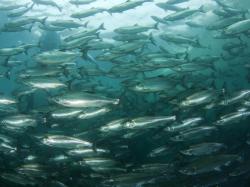United Nations Environment Programme Report Highlights Threat Posed By Abuse Of Antibiotics In Aquaculture
December 22, 2017 | 4 min to read

Earlier this month, the United Nations Environment Programme (UNEP) issued a report, Frontiers 2017: Emerging Issues of Environmental Concern, finding “antimicrobial resistance from environmental pollution among biggest emerging health threats.” The UNEP’s report, launched during the third UN Environment Assembly in Nairobi, Kenya, explained:
According to the World Health Organization, we may be entering a post-antibiotic era when simple, and previously treatable, bacterial infections can kill and when routine medical procedures, such as joint replacements and chemotherapy that rely on antibiotic preventative treatment, will no longer be possible. The 2014 O’Neill report commissioned by the UK government estimated that antimicrobial resistant infections may become the leading cause of death globally by 2050.
The UNEP’s report observed that antimicrobial resistant pathogens were already having a significant adverse impact on human health: “Globally about 700 000 people die of resistant infections every year because available antimicrobial drugs have become less effective at killing the resistant pathogens.”
As highlighted in Frontiers 2017, the abuse of antibiotics in aquaculture is of grave concern to the UNEP. According to the report, “[u]p to 75% of antibiotics in aquaculture may be lost into the surrounding environment.” The concentrations of antibiotics released into the environment through aquaculture may be limited, but “[a]ntimicrobial concentrations in most effluents are too low to be lethalto exposed bacteria, but may be sufficient to induce antimicrobial resistance.” Accordingly, “[m]ulti-drug resistant bacteria are prevalent in marine waters and sediments in close proximity to aquaculture, industrial and municipal discharges.”
Commenting on the report, UNEP chief Erik Solheim explained, “The warning here is truly frightening: we could be spurring the development of ferocious superbugs through ignorance and carelessness. . . . This needs priority action right now, or else we run the risk of allowing resistance to occur through the back door, with potentially terrifying consequences.”
Although the U.S. Food and Drug Administration (FDA) has taken significant action to discourage the use of antibiotics in shrimp aquaculture in China and Malaysia through the issuance of broad Import Alerts, the agency has made few strides to address the rampant, careless use of antibiotics in shrimp aquaculture in India and Vietnam. To the contrary, publicly-available information indicates that antibiotic use in Vietnamese shrimp aquaculture remains as prevalent as ever.
In 2017, 43% of U.S. imports of frozen, non-breaded warmwater shrimp originated in India and Vietnam. The volume of these shrimp imports from India and Vietnam into the United States has increased 28% this year compared to last year. In contrast, the volume of imports from the other 47 countries that supplied the U.S. with frozen, non-breaded warmwater shrimp this year has increased by only 0.9%. These numbers indicate that the Indian and Vietnamese shrimp aquaculture industries have been perversely rewarded for their failure to control antibiotic use in their shrimp farming. At the same time, shrimp exporting countries that have taken extensive steps to eliminate antibiotic use from their aquaculture are seeing their share of the U.S. market decline. Because persistent users of banned antibiotics in shrimp farming are afforded unfettered access to the U.S. market, the FDA is unintentionally dis-incentivizing foreign industries from investing in and maintaining production practices that do not rely on antibiotics for growth promotion or disease prevention and treatment.
“The UNEP’s report puts a powerful spotlight on the true cost of cheap shrimp,” said John Williams, the Executive Director of the Southern Shrimp Alliance. “As long as we continue to provide a market for shrimp farmed with banned antibiotics, the undisciplined, pointless use of antibiotics in aquaculture will continue, and we will all suffer the terrible consequences.”
Read the “Antimicrobial Resistance: Investigation the Environmental Dimension” chapter of the United Nations Environment Programme’s Frontiers 2017: Emerging Issues of Environmental Concern report here: http://www.shrimpalliance.com/wp-content/uploads/2017/12/Frontiers-2017-Antimicrobial-Resistance-Excerpt.pdf
Review the full United Nations Environment Programme’s Frontiers 2017: Emerging Issues of Environmental Concern report here: https://www.unenvironment.org/resources/frontiers-2017-emerging-issues-environmental-concern
Read the United Nations Environment Programme’s press release, “Antimicrobial resistance from environmental pollution among biggest emerging health threats, says UN Environment” (Dec. 5, 2017) here: https://www.unenvironment.org/news-and-stories/press-release/antimicrobial-resistance-environmental-pollution-among-biggest
Read the University of Minnesota’s Center for Infectious Disease Research and Policy (CIDRAP)’s story, “UN report cites environment threat of antimicrobial resistance” (Dec. 5, 2017) here: http://www.cidrap.umn.edu/news-perspective/2017/12/un-report-cites-environmental-threat-antimicrobial-resistance
Source: Southern Shrimp Alliance
